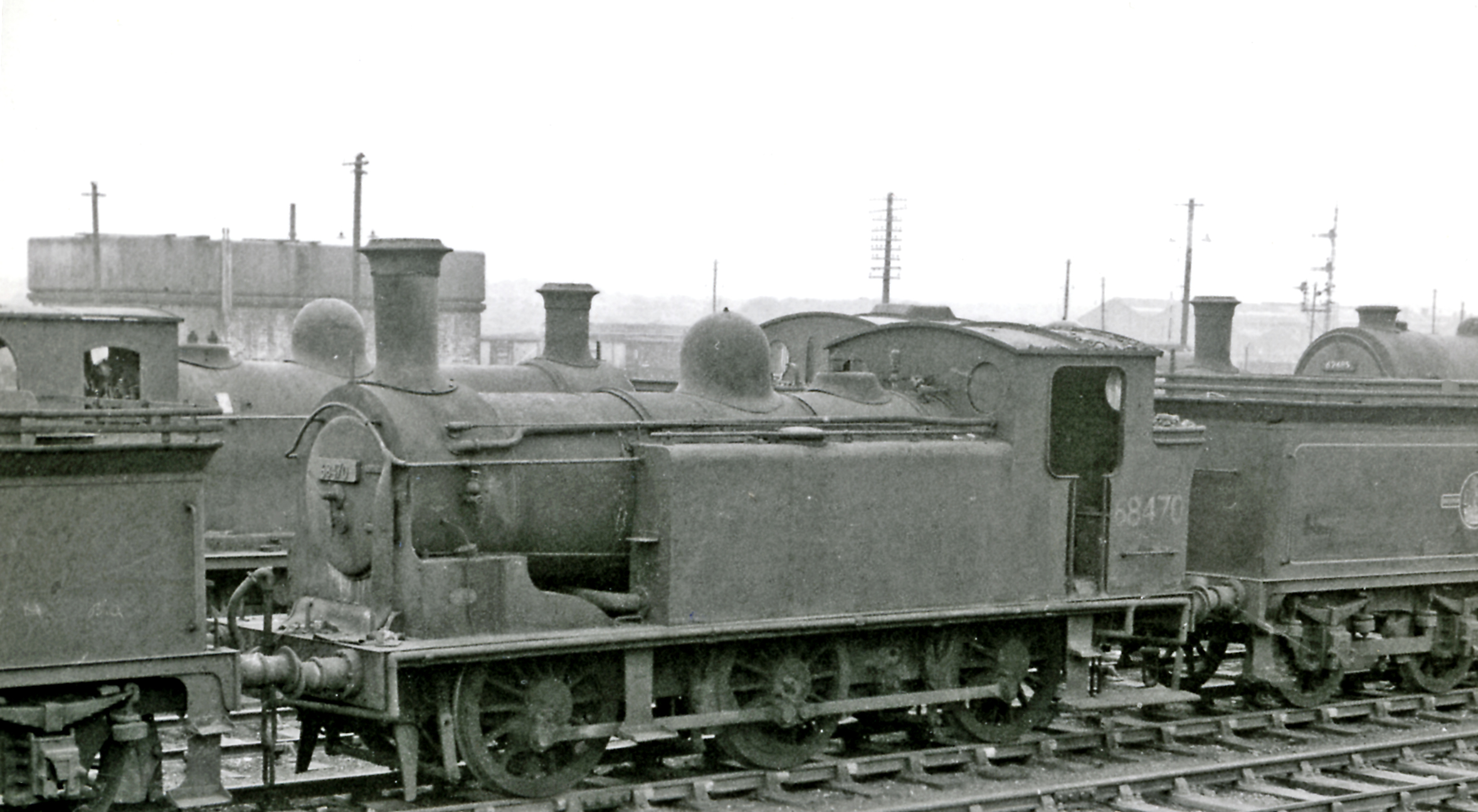|
LNER Class J36
The NBR C Class ( LNER Class J36) is a class of 0-6-0 steam locomotives designed by Matthew Holmes for freight work on the North British Railway (NBR). They were introduced in 1888 with inside cylinders and Stephenson valve gear. A total of 168 locomotives was built, of which 123 came into British Railways ownership at nationalisation in 1948. This was the last class of steam engine in service in Scotland. The NBR C Class (LNER Class J32) was a class of 0-6-0 steam locomotive designed by Dugald Drummond for freight work on the North British Railway. They were built in 1876 and 1877 and had large 18-inch cylinders. A total of 32 locomotives were built. The NBR gave these engines the same designation (C class) as the Matthew Holmes engines above. The two types were very similar, and shared the same (then unusual) 18 inch cylinder size. Between 1898 and 1903, Holmes had all 32 of the Drummond locomotives rebuilt to match his own C class design. Thus the locomotives were considered ... [...More Info...] [...Related Items...] OR: [Wikipedia] [Google] [Baidu] |
Matthew Holmes (engineer)
Matthew Holmes (born in Paisley in 1844 and died in Lenzie on 3 July 1903) was Locomotive Superintendent of the North British Railway from 1882 to 1903. The office had two deputies, the senior known as ''Assistant Locomotive Superintendent and Chief Draughtsman'', the junior known as ''Assistant Locomotive Superintendent''. Throughout his incumbency, Holmes's Assistant Locomotive Superintendent and Chief Draughtsman was Robert Chalmers. Various men held the position of Assistant Locomotive Superintendent, the last to do so being William Paton Reid. Holmes was succeeded in office by Reid. Later, Reid was to be succeeded by Robert Chalmers' son, Walter. Locomotive Designs Locomotives designed by Holmes include: * NBR Class C, later LNER Class J36 0-6-0, * NBR D class 0-6-0T, later LNER Class J83 0-6-0T * NBR Class M, later LNER Class D31 4-4-0 *NBR D class 0-6-0 The NBR Class D (later LNER Class J34) was a class of 0-6-0 steam locomotive of the North British Railway, ... [...More Info...] [...Related Items...] OR: [Wikipedia] [Google] [Baidu] |
Forth Bridge
The Forth Bridge is a cantilever railway bridge across the Firth of Forth in the east of Scotland, west of central Edinburgh. Completed in 1890, it is considered a symbol of Scotland (having been voted Scotland's greatest man-made wonder in 2016), and is a UNESCO World Heritage Site. It was designed by English engineers Sir John Fowler and Sir Benjamin Baker. It is sometimes referred to as the Forth Rail Bridge (to distinguish it from the adjacent Forth Road Bridge), although this has never been its official name. Construction of the bridge began in 1882 and it was opened on 4 March 1890 by the Duke of Rothesay, the future Edward VII. The bridge carries the Edinburgh–Aberdeen line across the Forth between the villages of South Queensferry and North Queensferry and has a total length of . When it opened it had the longest single cantilever bridge span in the world, until 1919 when the Quebec Bridge in Canada was completed. It continues to be the world's second-lon ... [...More Info...] [...Related Items...] OR: [Wikipedia] [Google] [Baidu] |
Edmund Allenby
Field Marshal Edmund Henry Hynman Allenby, 1st Viscount Allenby, (23 April 1861 – 14 May 1936) was a senior British Army officer and Imperial Governor. He fought in the Second Boer War and also in the First World War, in which he led the British Empire's Egyptian Expeditionary Force (EEF) during the Sinai and Palestine Campaign against the Ottoman Empire in the conquest of Palestine. The British succeeded in capturing Beersheba, Jaffa, and Jerusalem from October to December 1917. His forces occupied the Jordan Valley during the summer of 1918, then went on to capture northern Palestine and defeat the Ottoman Yildirim Army Group's Eighth Army at the Battle of Megiddo, forcing the Fourth and Seventh Army to retreat towards Damascus. Subsequently, the EEF Pursuit by Desert Mounted Corps captured Damascus and advanced into northern Syria. During this pursuit, he commanded T. E. Lawrence (''"Lawrence of Arabia"''), whose campaign with Faisal's Arab Sherifial ... [...More Info...] [...Related Items...] OR: [Wikipedia] [Google] [Baidu] |



